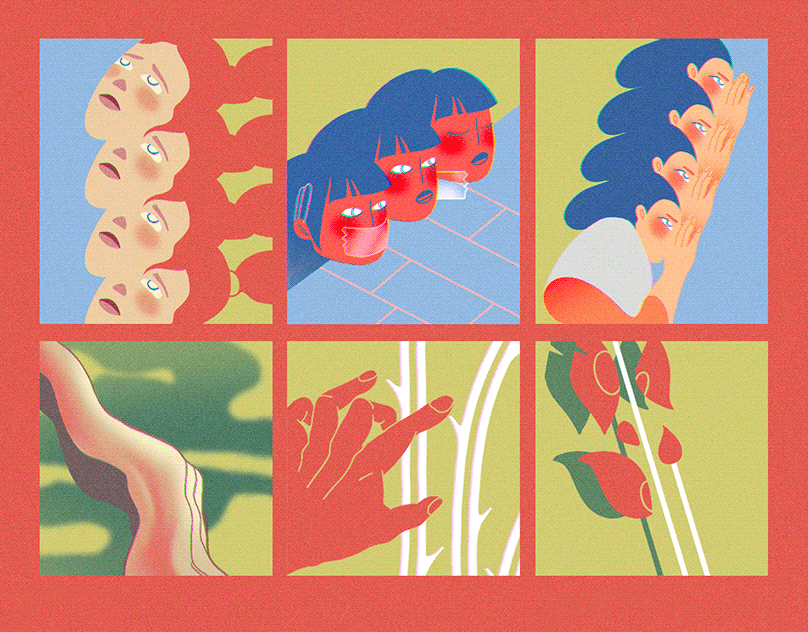
Gas stations beyond cars
As more and more cars will go electric or simply disappear, gas stations will become ruins of a happily forgotten past. In this context, this project’s aim is to depict desirable, inclusive and life-driven scenarios in our cities. It explores how gas stations, as the living symbols of the climate crisis in our cities, can be repurposed and collectivised in order to give back and heal the wound they’ve helped creating in both our ecology and our societies.
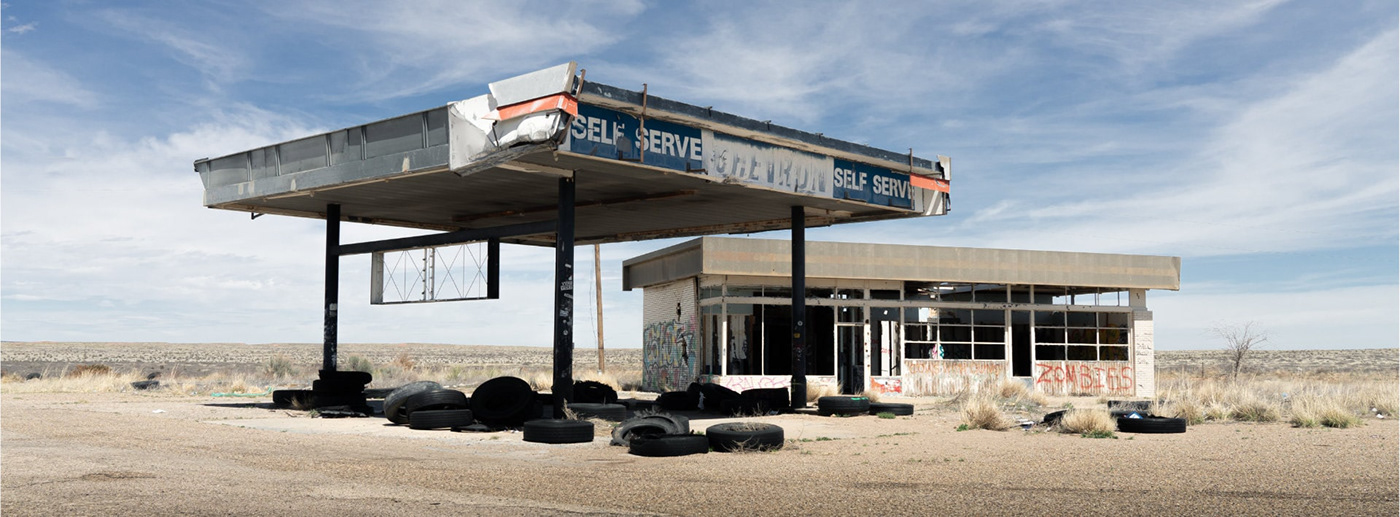
Fueling up desirable futures
The project consists on a set of five different gas stations from different parts of the globe, that now serve a different function: from urban farming and rewilding practices to social hubs, collectively owned workshops or waste management infrastructures. This time, we want to help visualise regenerative scenarios that are at the same time hopeful and attractive to people. We want to put the spotlight on the alternatives rather than in the causes. We want to showcase scenarios beyond capitalism and capitalist values, where old paradigms have been resignified and act now as catalyst for change.
We’ve tried to represent a wide range of cityscapes, natural environments and architectures, getting rid of the worn-out westernised image of the future. By creating more inclusive imageries, we can only hope we will make more people feel these futures as a real possibility, conveying the message to a wider audience.
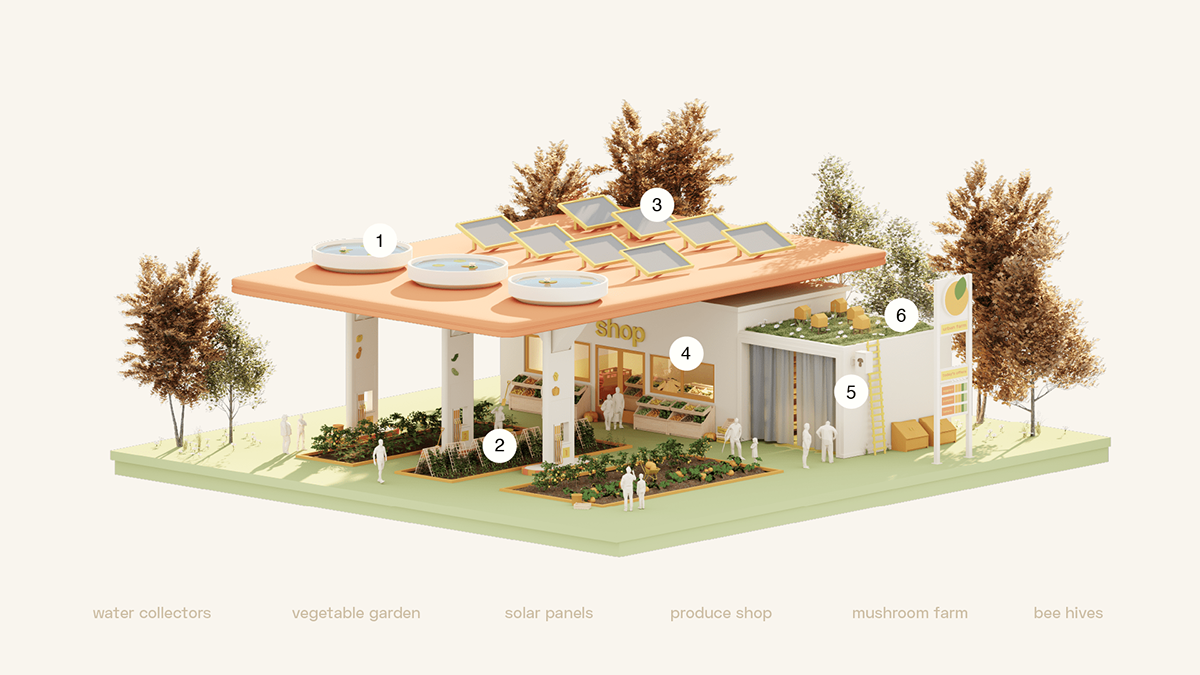
THE URBAN FARM
What if we used those old, congested gas stations in the city centres as urban farms and gardens?
At Sharp & Sour, the future of food is our top priority, and knowing that the inhabitants of big cities will only grow in the short term, while the amount of food produced globally will decline, we needed to act on this matter. Urban farms and gardens do exist, but they’re not enough. Gas stations provide a great infrastructure to generate urban gardens, with both sunny and shady areas, covered and dark rooms for mushrooms as well as spaces for fruit trees or containers to generate compost.
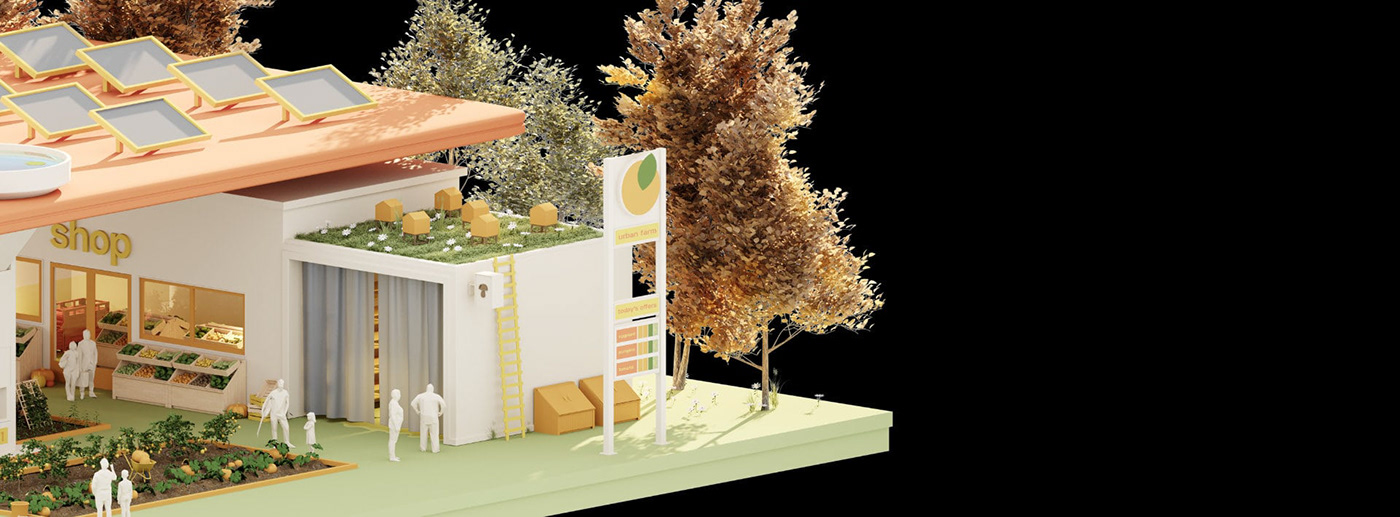
“if we lose the bees, so many fruit, vegetable and other plant crops would soon follow. […] Today, the bees are indicating to us that something is very wrong with the world. We would be wise to listen. If bees go, a number of critical culinary species follow.”
Prof. Lenore Newman
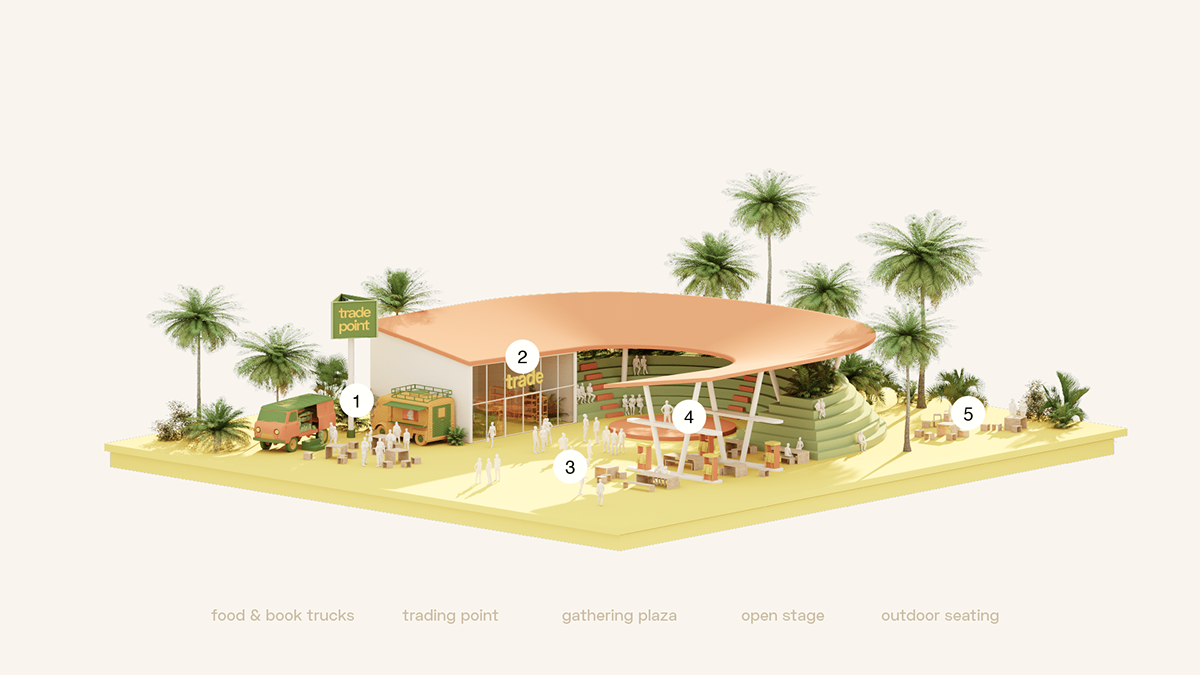
THE SOCIAL HUB
Cities lack of urban, open and free to use places to meet people, gather in groups and engage in activities we’re not even able to imagine yet.
In the paradigm of capitalist cities, leisure time always implies consumption: wether it’s a coffee shop, a shopping mall or a cinema. Here we want to give the space to the neighbours, not in the shape of a park or a kids playground, but in an infrastructure that provides adult people with a place to enjoy the city without spending money. A free, open space to meet, talk, trade our old stuff, pick a book from a collective ‘booktruck’ or have a picnic with friends.
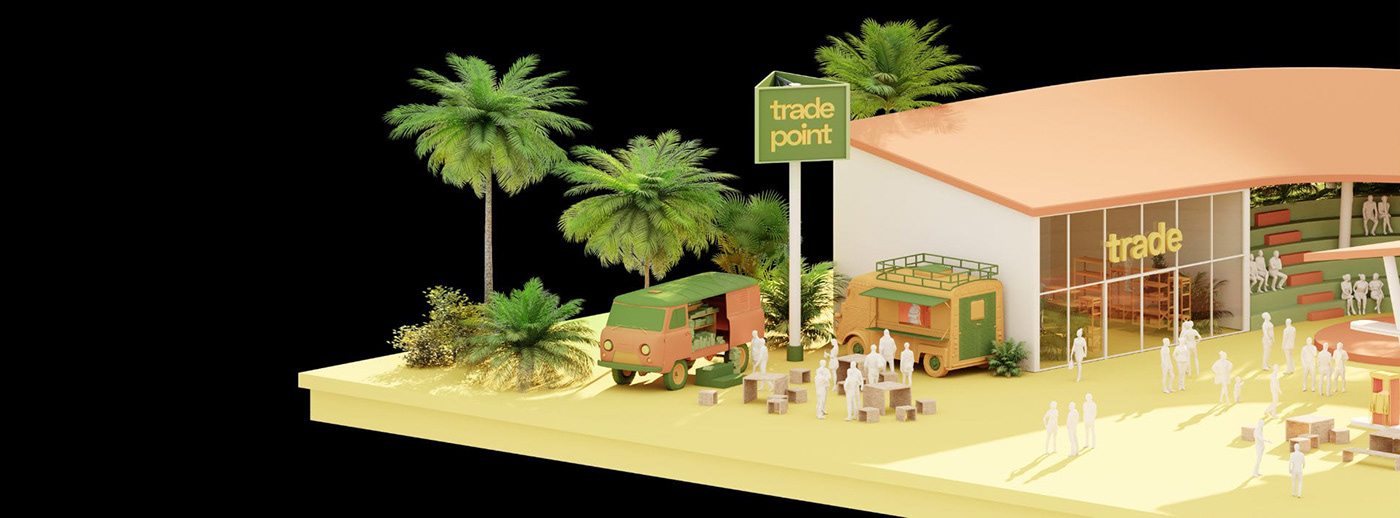
“In the paradigm of capitalist cities, leisure time always implies consumption: whether it’s a coffee shop, a shopping mall or a cinema.”
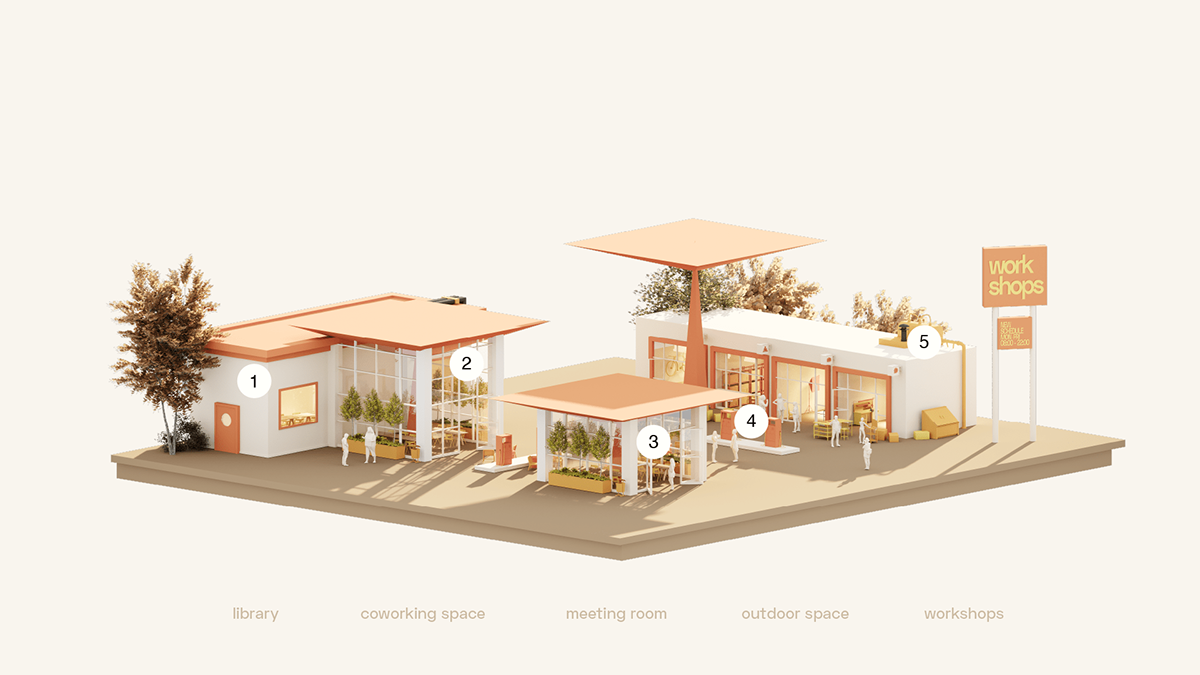
THE FAB LAB
You know these huge gas stations, with rows of car washing units and service areas?
Well, they’re workshops and fab labs now, with spaces for arts and crafts, photography studios, 3D printers, labs, rooms where you can get your devices repaired despite programmed obsolescence and much more. For this kind of gas station, we envision places where people can work, develop projects both together and individually, have meetings or simply going to read or study. These spaces could be a symbol of how to -literally- build a future far from capitalist ways of doing.
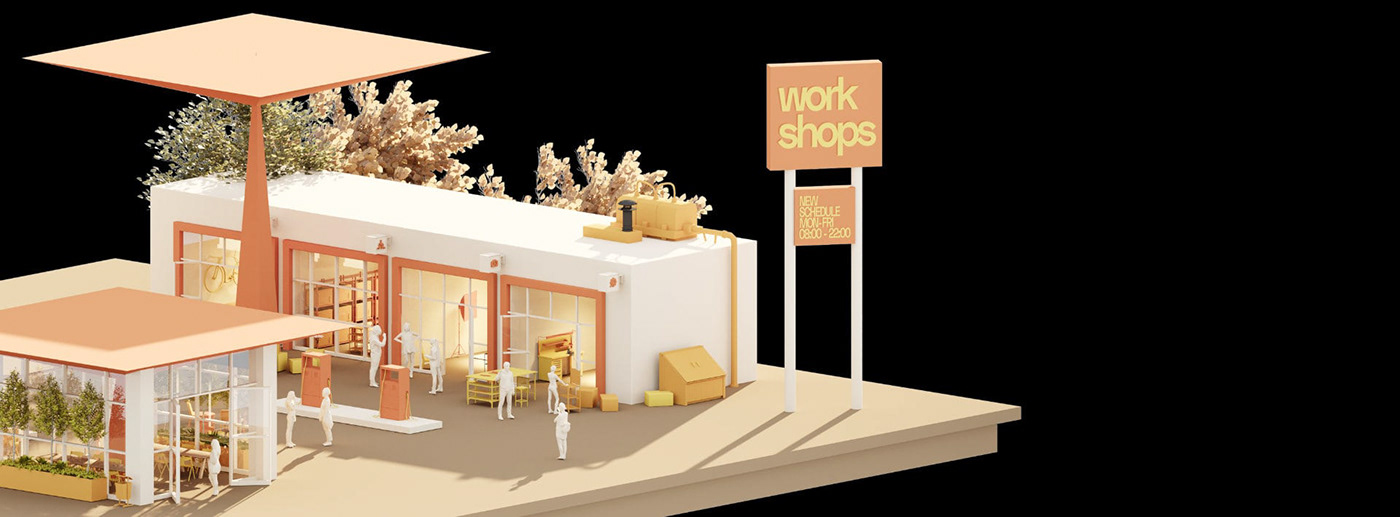
“These spaces could be a symbol of how to -literally- build a future far from capitalist ways of doing.”

THE POCKET FOREST
Pocket forests are a concept developed by Japanese botanist Akira Miyawaki.
They’re tiny urban forests that can be grown inside a roundabout, a school playground or in an old gas station. Pocket forests are full of native species growing together in a dense area, which makes them able to store 40 times more carbon dyoxide. They also generate 100 times more biodiversity than traditional forests, including numerous pollinators and amphibians, which, at the same time, attracts more birds, small mammals and other animals. Using gas stations as forests, simply, could help enormously to fight climate crisis and rewilding urban areas.
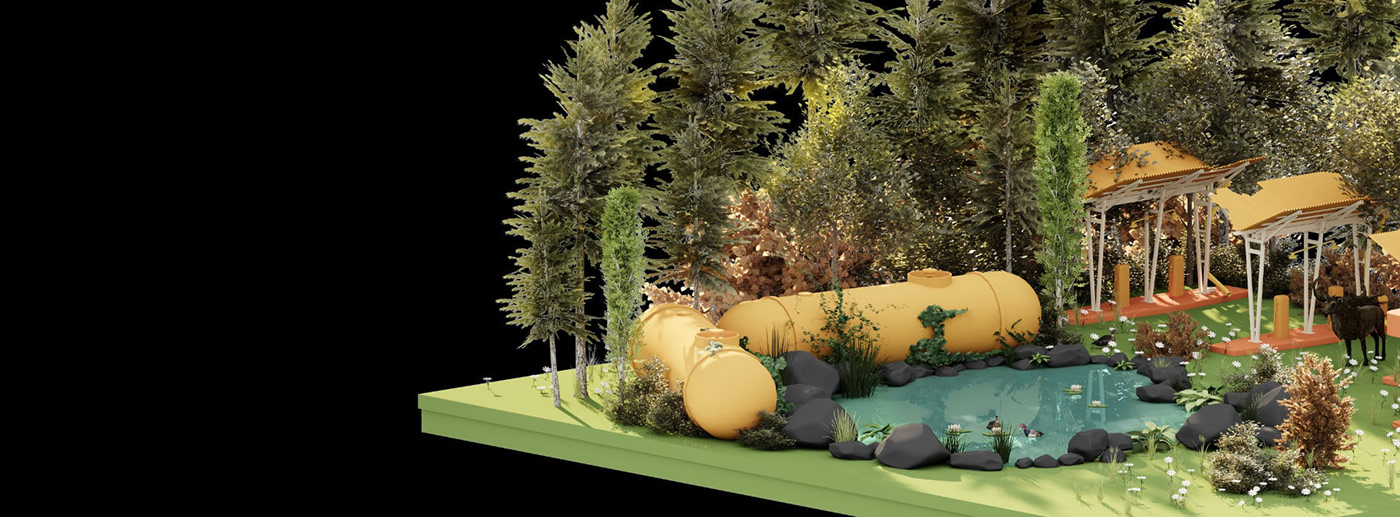
“It is the potential for helping to combat climate change that makes Miyawaki forests a particularly attractive option for many environmentalists. […] It’s estimated that new or restored forests could remove up to 10 gigatons of C2O equivalent by 2050.
[…]
Conservation groups stress that Miyawaki forests should not be seen as an alternative to protecting existing native forests. Small, unconnected wooded areas can never replace the large tracts of forest that are vital to so many species, and that remain under threat from commercial plantations and slash-and-burn farming. But if you have a patch of wasteland in your local community that is sitting idle, a Miyawaki forest could be one way of doing your bit to help the environment.”
World Economic Forum
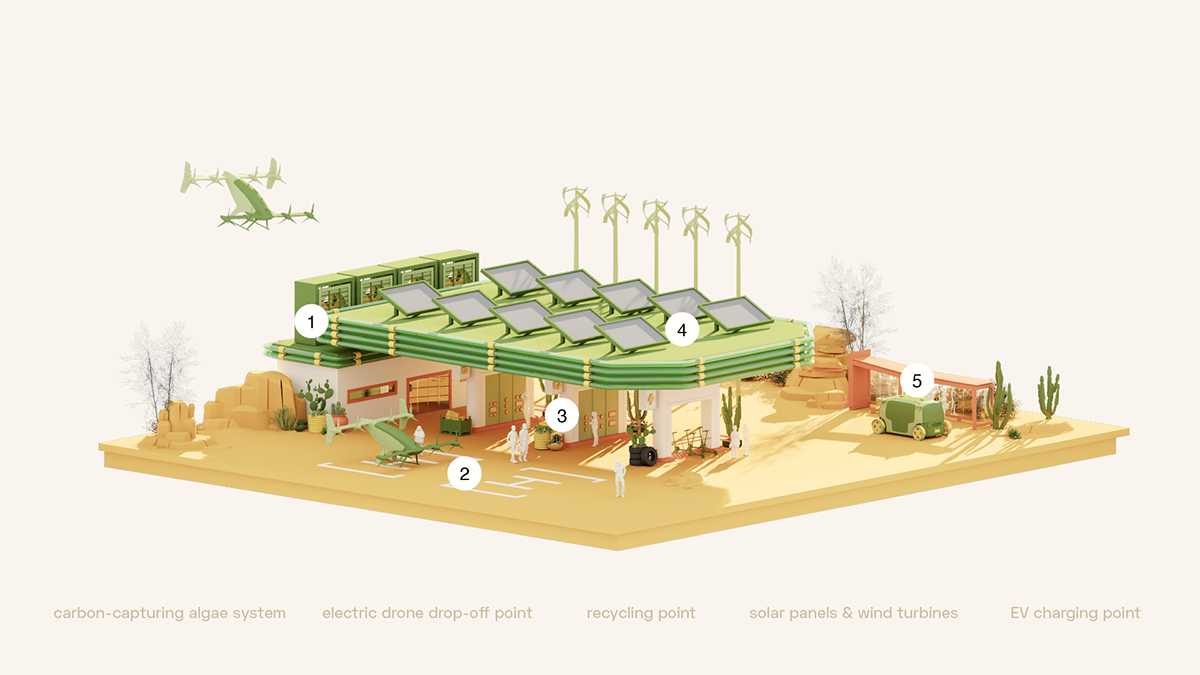
CLEAN ENERGY POINT
A car-free future will still need cars, scooters and even flying drones to move people and products from one place to another.
Of course, they will need to be electric or otherwise, and therefore we wanted to include a space still dedicated to them. But this ‘gas’ station is not just a charging point for your e-scooter, it is also a recycling hub, a waste management facility and a source of natural and renewable energy. In addition, we use the surrounding space to create a station for different kinds of public transportation. What if you could fly from your nearby ‘gas’ station to the one next to your friends house, on the other side of the city in an electric flying taxi?
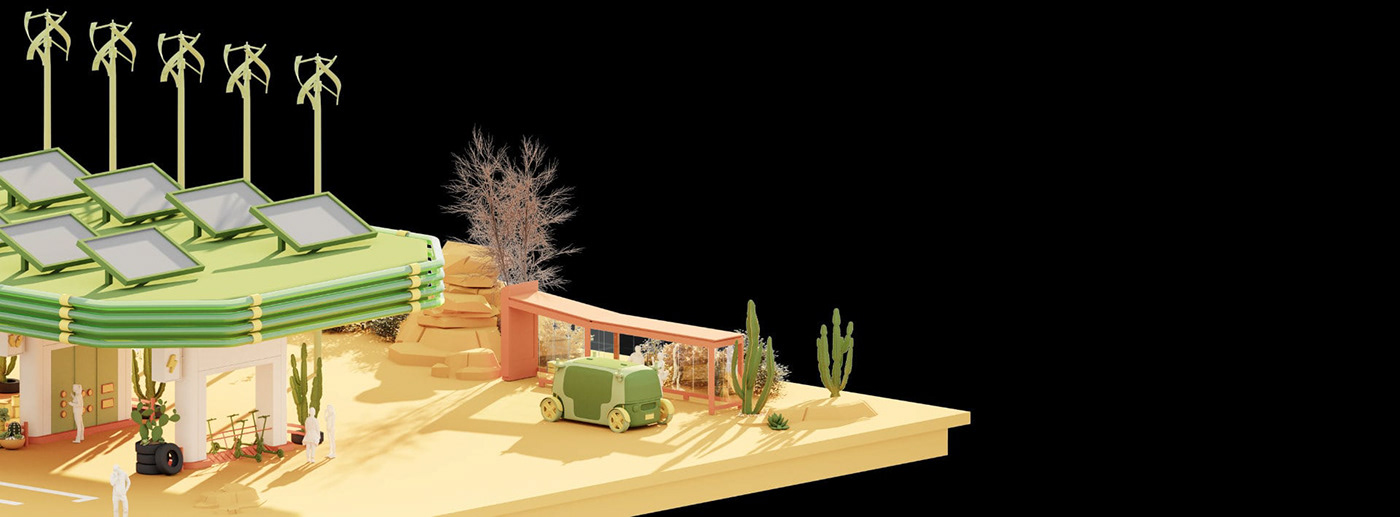
“Algae are the main source of oxygen production, much more than terrestrial forests: it is estimated that they participate with about 50% of global photosynthesis. In addition to being an important part of the supply of oxygen to the planet, recent studies indicate that the oceans have so far captured around 40% of the carbon dioxide emitted by humans.”
High Latitude Marine Ecosystem
Dynamics Research Center
Dynamics Research Center
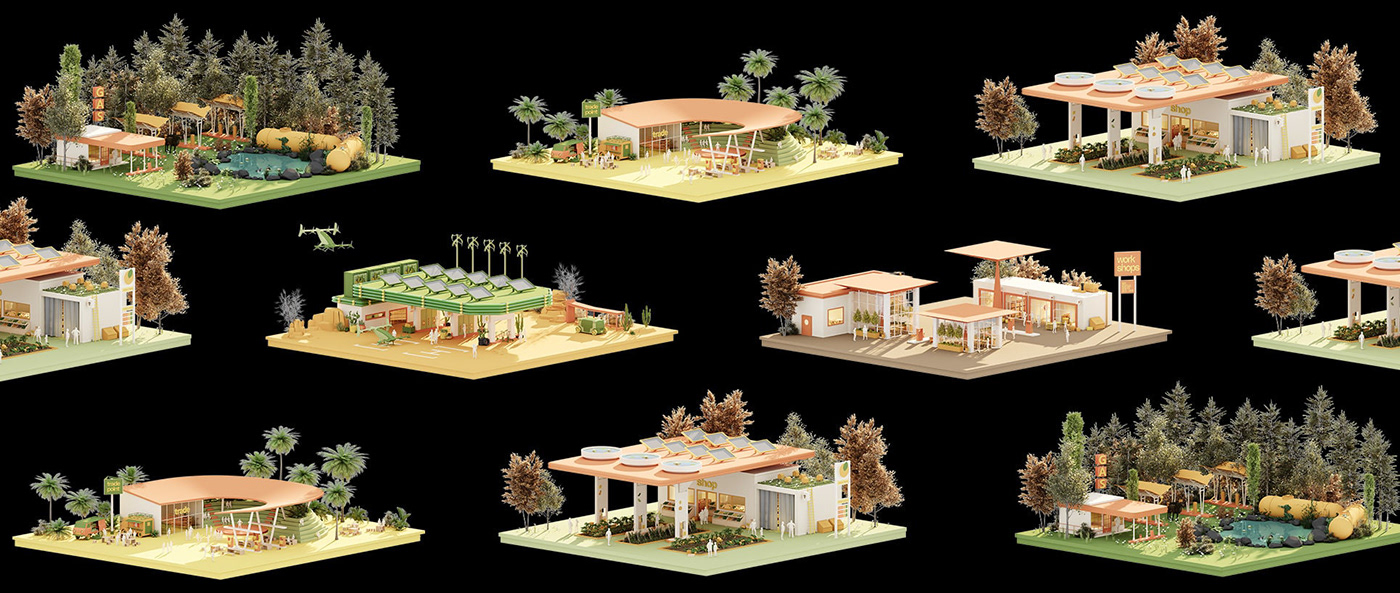
THANK YOU!




